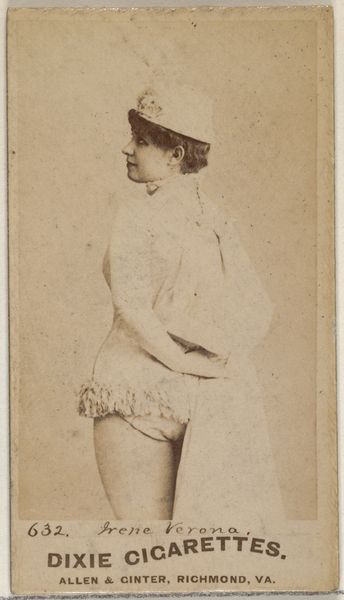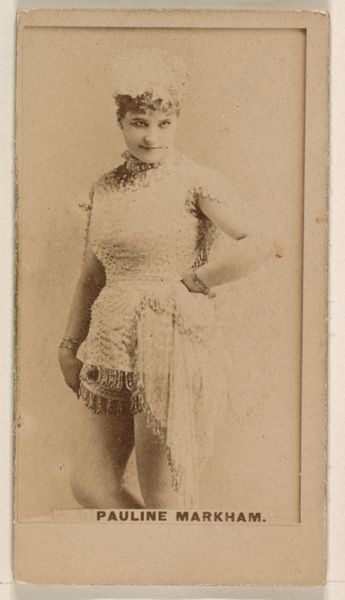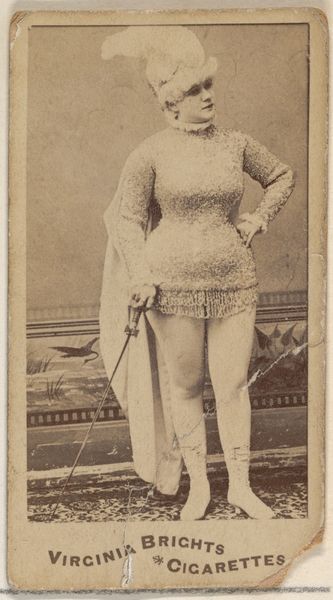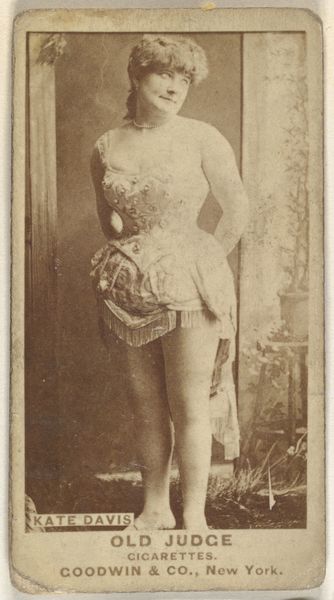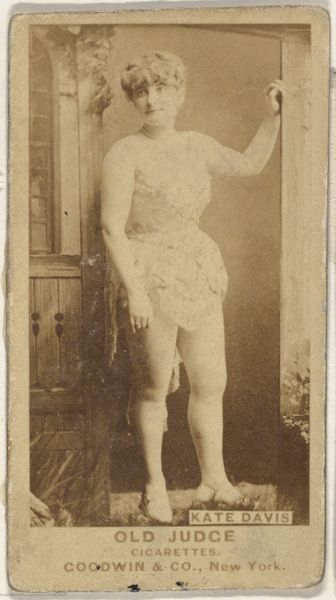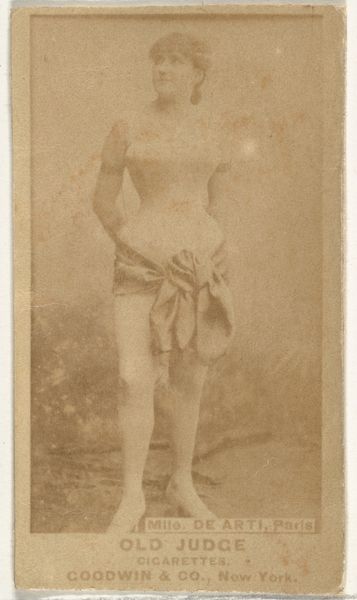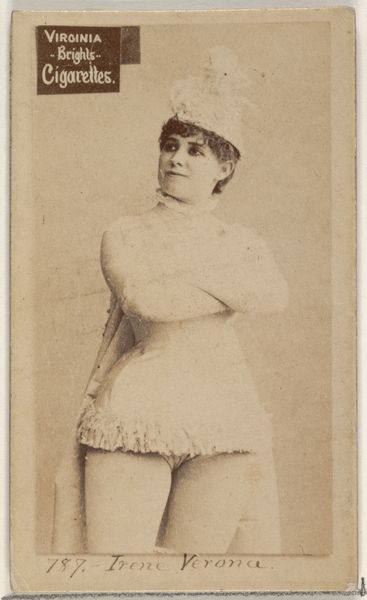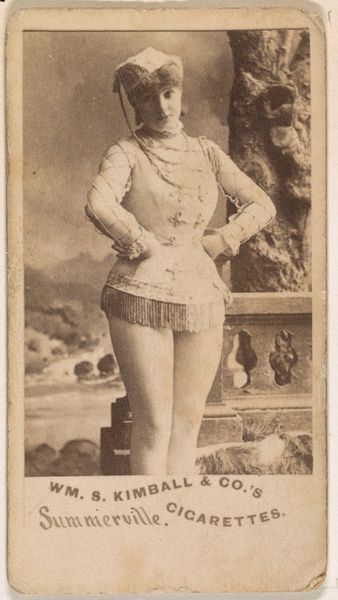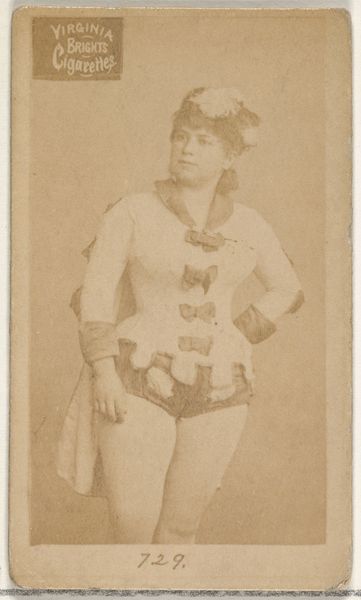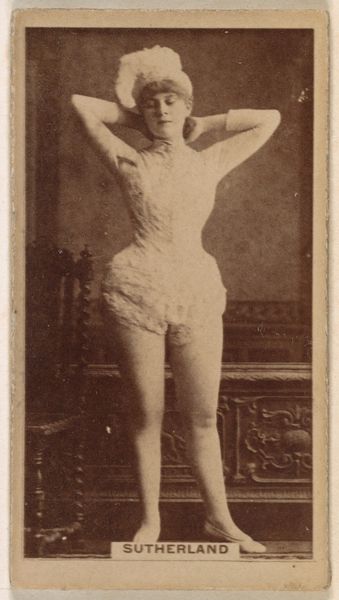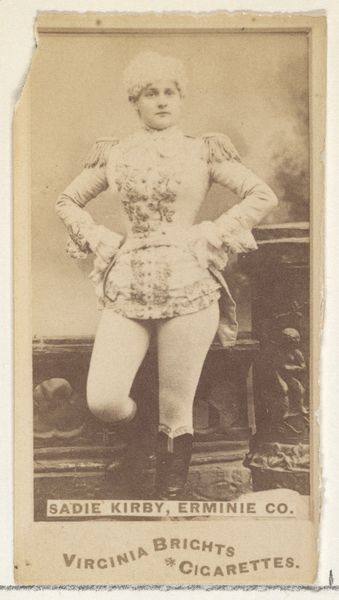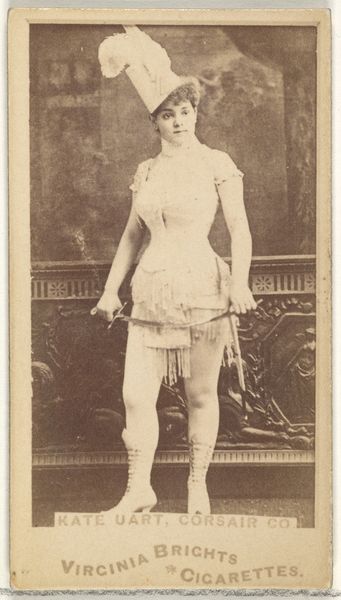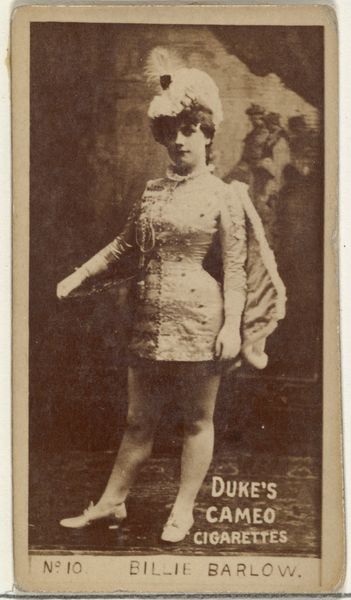
Card Number 385, Pauline Markham, from the Actors and Actresses series (N145-5) issued by Duke Sons & Co. to promote Cameo Cigarettes 1880s
0:00
0:00
drawing, print, photography
#
portrait
#
drawing
#
toned paper
# print
#
photography
#
men
Dimensions: Sheet: 2 11/16 × 1 3/8 in. (6.8 × 3.5 cm)
Copyright: Public Domain
Curator: Let's turn our attention to this interesting piece of ephemera, a card from the Actors and Actresses series issued by W. Duke, Sons & Co. in the 1880s. It's Card Number 385, featuring Pauline Markham. Editor: My initial reaction is… theatrical. There’s a staged quality, not just in her pose but also in the light. She seems caught between allure and discomfort, very evocative of the period. Curator: Indeed. These cards were actually included in packs of Cameo Cigarettes. Think about the role that promotional materials play in constructing celebrity and desire. How are women, particularly actresses, marketed and consumed within that context? Editor: Exactly. It's more than just a pretty picture. Cigarette cards offered access—illusory, of course—to a world of celebrity and aspiration. And it reinforces the gaze, doesn't it? Pauline Markham's agency, her own voice, is essentially subsumed within a commodity transaction. The power dynamic is glaring. The patriarchy sells women and cigarettes in one swoop. Curator: Right. And Markham herself, a popular burlesque performer, was no stranger to navigating societal expectations around femininity and performance. I believe her costume would have been a typical attire during that era in that type of play. So we should avoid falling into the trap of imposing current views onto her. How do you view the medium of print in regard to distributing political ideas? Editor: I think these printed cards were early forms of mass communication that were incredibly powerful, but let's acknowledge the complex socio-political underpinnings involved in any medium distributed among a populous group. The way these were produced and consumed speaks volumes about late 19th-century values. Curator: Precisely. Consider also the class implications; access to these images and the associated cultural capital was limited. Thinking through that lens makes you ask how we deal with inequality, even as we create more art today. Editor: True, it reminds us that even seemingly innocuous images carry complex histories. Considering Pauline Markham not just as a performer, but as a figure embedded in systems of power, helps us better understand her historical moment.
Comments
No comments
Be the first to comment and join the conversation on the ultimate creative platform.

